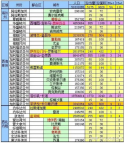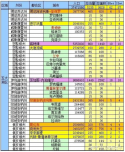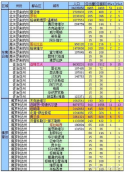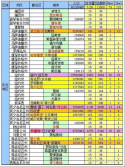You know, after seeing
@Andy1974's comment on the matter:
Kinda tells me that we have different mentalities.
You guys (
@Blitzo and
@Untoldpain) are
assuming that China is dealing with a sane, rational, can-be-negotiated-with US leadership.
Meanwhile, I am
supposing that China is dealing with an insane, irrational, bloodthirsty and ruthless US leadership.
That means unlike you guys who would think that the US leadership would know how to stop after launching 1700 of their nuclear warheads and seeing that their cities have been flattened by nuclear hellfire - I do believe that
the US leadership would be crazy enough to do whatever it takes to destroy everyone, regardless of how much destruction has been inflicted upon their country, and regardless of how many of their citizens are dead.
No, I absolutely do not think that the US leadership will "know how to stop after launching 1700 of their nuclear warheads".
If the US enters a strategic nuclear exchange with another great power, I absolutely expect the US to launch as many of their nukes as possible in multiple follow-up attacks after the initial large first wave, even to the point of no good reason for follow-ups.
However, if you are China, it doesn't matter to China whether the US launches 1700 nukes in total or 170,000 nukes in total, because at that point everything is already over and everyone has already been settled. There's no coming back -- they've lost civilization as China knows it.
The only way to not lose, is by
deterring a nuclear war from starting in the first place.
As China would not be an instigator in a nuclear war, the goal is thus simply to deter the adversary from launching a nuclear first strike.
And to deter a nuclear first strike, requires you to be able to hold to threat the things that they value with retaliatory capabilities -- that is the basis on which counter-value strategies work.
Let me quote this very statement of yours,
@Blitzo:
According to your statement, you mean that China should nuke and flatten as many US' (or any other country) population centers as possible in order to inflict as much pain and suffering to the US (or any other country) and their people in case they have any ideas on utilizing nukes against China.
However, per most credible estimates,
China at present only has around
350 nuclear warheads.
-snip-
What does that mean? That means that there is
no reasonable way for China to go the "
all-out-nuclear-destruction-to-the-US" and "
kill-as-many-people-in-the-US" option that you have just proclaimed,
@Blitzo,
with only limited amount of nuclear warheads in China's arsenal.
That's what I meant.
<<<END>>>
No. In terms of counter-value strategies, it does not mandate
every single city has to be targeted, rather a sufficient number of cities must be targeted to
achieve sufficient deterrence effect against the adversary's decision makers to deter them from carrying out a first strike.
Now, absolutely, I agree that at present with China's
current/recent past nuclear arsenal, does not meet the threshold for a robust counter-value doctrine.
However, for that same reason, China's
current/recent past nuclear arsenal is
far far less capable of meeting the threshold for a counter-force doctrine in the way that you describe.
In terms of general nuclear strategy, the relationship between nuclear arsenal size and nuclear strategy versus a given foe, looks something like this:
- Small nuclear arsenal --> Minimally credible counter-value doctrine
- Moderate nuclear arsenal --> Moderately credible counter-value doctrine
- Substantial nuclear arsenal --> Robust and comprehensive counter-value doctrine
For a nation like North Korea, who are trying to achieve deterrence against the US, their small nuclear arsenal is below/bordering the threshold for a "Minimally credible counter-value doctrine" capability. (They are trying to deter the US for their own survival -- can you imagine North Korea trying to do a counter-value strategy first with their current nuclear capabilities? It would be just as insane for them to do that as it would be for China to do so right now)
For a nation like China, who is trying to achieve deterrence against the US, if we assume 350 warheads mated to their current combination of ICBM ranged weapons, I would say at present they meet the low end threshold for a "Moderately credible counter value doctrine" capability.
So, if you are a nation that wants to carry out a
counter-force strategy against the same given foe, you must first achieve a "Robust and comprehensive counter-value doctrine" before you can even dream about procuring the weapons to spare to be used in a counter-force manner.
Think of the "Robust and comprehensive counter-value doctrine" as a
prerequisite capability that must first be achieved, prior to procuring weapons for a counter-force manner.
So let's talk about China.
Let's say that in the projected next three decades, China needs a deliverable ICBM warhead count of 1500 nuclear warheads mated to ICBM ranged weapons to achieve the "Robust and comprehensive counter-value doctrine" against the US.
If you want to carry out your counter-force doctrine, then China needs to
first attain 1500 nuclear warheads mated to ICBM ranged weapons -- and
only after that is achieved, can you start thinking about widespread nuclear strikes against the strategic military targets in the counter-value strategy you have described.
Remember -- deterring a first strike, is achieved by holding to risk the things which the adversary values. Their cities, economic, industrial and population and political centers.
You cannot simply bypass the requirement for a "Robust and comprehensive counter-value doctrine" to adopt a "only counter-force first strategy", because by doing that you
forfeit the ability to deter the enemy from carrying out a nuclear first strike.
It is putting the cart before the horse.
A "only counter-force first strategy" is only able to help degrade/mitigate/prevent subsequent follow-up nuclear strikes
after the enemy has already carried out their large scale first strikes.
Great, it means that you've traded all of your cities and industrial and economic centers, for adversary's strategic military targets, while the adversary's own cities and industrial and economic centers are unmolested.
The enemy would happily take that trade every single day of the year.
(Various edits made)








